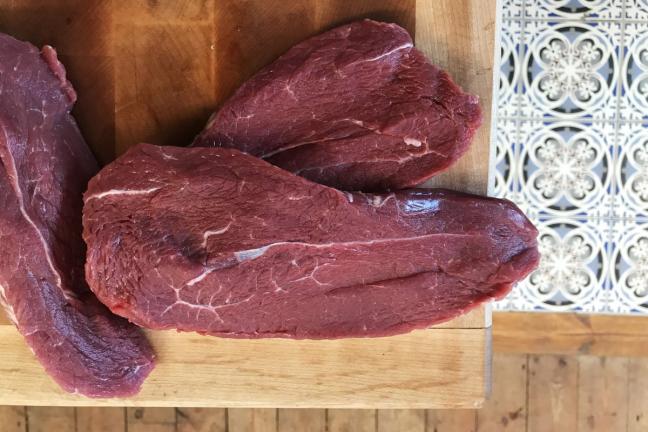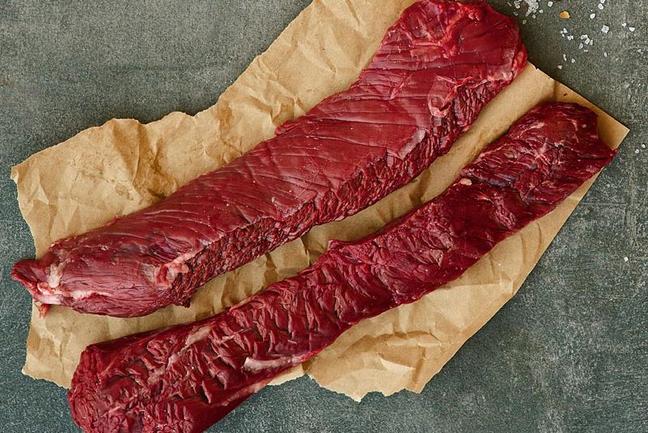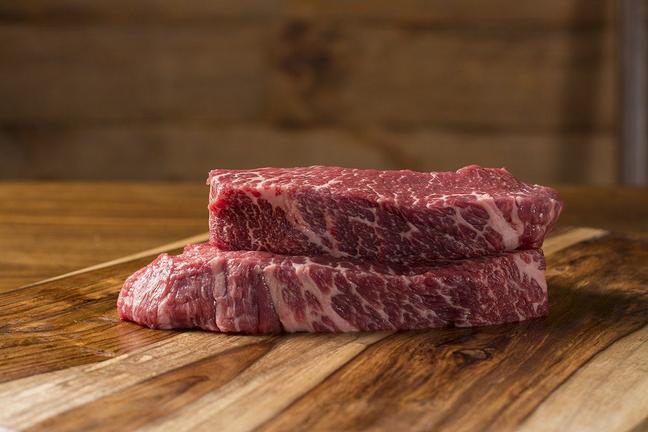These are the best cuts of meat you’ve never tried
From Spider Steaks to Shoulder Clods, we asked an expert butcher what we’ve been missing out on
Steaks come in all shapes and sizes – from the top end of the beast right to the tip. But what we see in restaurants and on supermarket shelves are only a very small number of the cuts actually available from cows. So, rather than your ribeye and instead of your sirloin, we’ve turned to beef buff Jonny Farrell to right our steaking mistakes. Head butcher at Jimmy’s Farm, Farrell understands that each rarified cut has its own uniqueness and comes with a variety of names from across the globe.
"Rather than your ribeye and instead of your sirloin, we’ve turned to beef buff Jonny Farrell to right our steaking mistakes..."
“Here are five of my favourite beef cuts,” the master butcher tells us. “You’ll love them and, if nothing else, at least they’ll give you some lively conversation the next time you’re eating at a steak house or buying at your local butcher.”
Velvet Steak

With only two per carcass, these little steaks come from the shin of the cow – which is usually reserved and used for stews. However, once this small muscle is butchered you can expect a rich, beefy flavour under a quick flash-fry.
Downside: It’s a little on the small side.
Upside: Incredibly cheap but seriously rich in flavour.
How to cook: A speedy flash-fry.
Shoulder Clod Steak

This beauty usually gets sold as Braising Steak. However, I tenderise it by using a ‘Jaccard’ (a press of lots of tiny knives). It’s located in the shoulder (triceps brachi) and sits next to the (now well-known) flat iron steak. If you’re a gym goer and like eating meat, then this could be for you. It’s a lean mean fighting steak!
Downside: Has more of a bite than your better-known steaks.
Upside: Cheap and packed full of flavour.
How to cook: Flash fry or braise.
Spider Steak

Also known as the Oyster Steak, this is another beef cut from the hindquarter. It’s hidden away right underneath the aitch bone (rump). Again, there’s only two per beast but each one, due to the exercise of the muscle, maintains great flavour and texture.
Downside: On the smaller side.
Upside: Cheap, textured and flavoursome.
How to cook: Flash-fry or BBQ.
Teres Major

This steak has a little more finesse than the others. It’s found in between the flat iron and shoulder clod. It’s a slim, cylindrical muscle that can be cooked up and sliced similarly to tenderloin – which it looks and cooks a lot like. However, it is considerably more expensive.
Downside: If you’re planning on making a big Beef Wellington, you’ll need a few cows.
Upside: Cheaper than tenderloin and very versatile.
How to cook: Flash fry or BBQ or roast
Denver Steak

Probably my favourite steak of all. This muscle, Serratus Ventralis, spans across the front of the animal starting at the chuck (shoulder) and ending near the flank. This steak is part of your short rib. But, if you take the shoulder section out, it becomes the Denver. Finally, a bigger muscle for you to fry up and tuck into.
Downside: A little more money than the others.
Upside: A beautiful, large muscle packed with marbling and flavour.
How to cook: Flash fry or BBQ.
Got your meat cut sorted? Now learn how to cook the perfect steak, according to the experts…

Become a Gentleman’s Journal Member?
Like the Gentleman’s Journal? Why not join the Clubhouse, a special kind of private club where members receive offers and experiences from hand-picked, premium brands. You will also receive invites to exclusive events, the quarterly print magazine delivered directly to your door and your own membership card.


